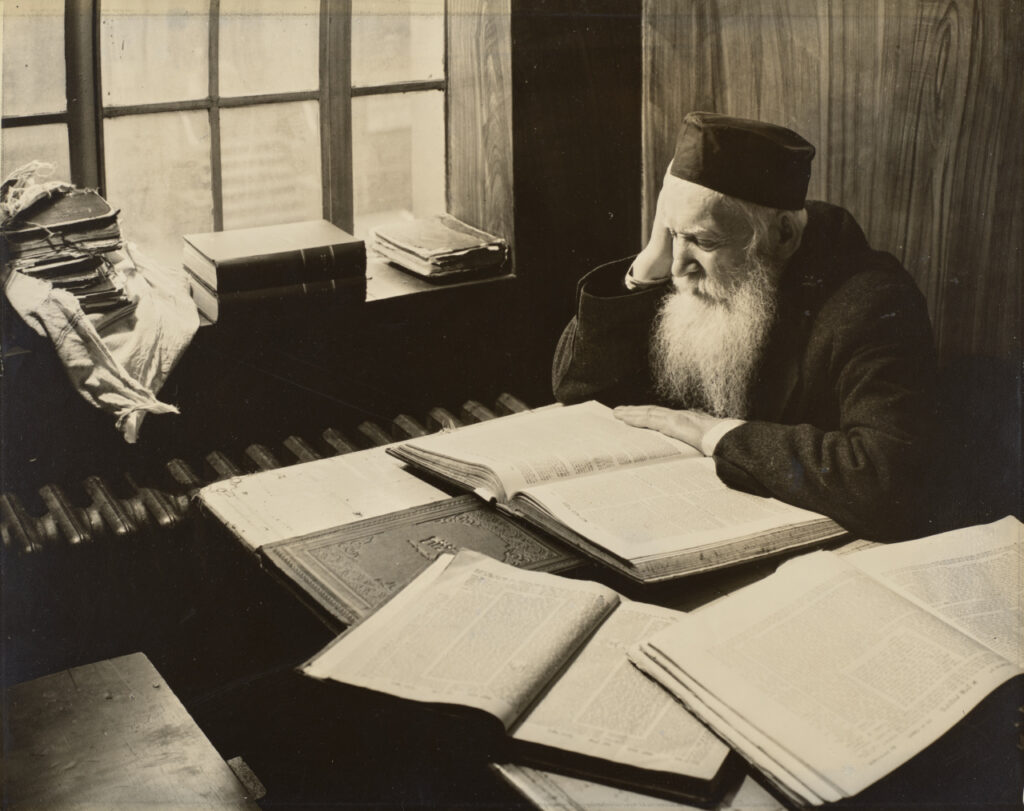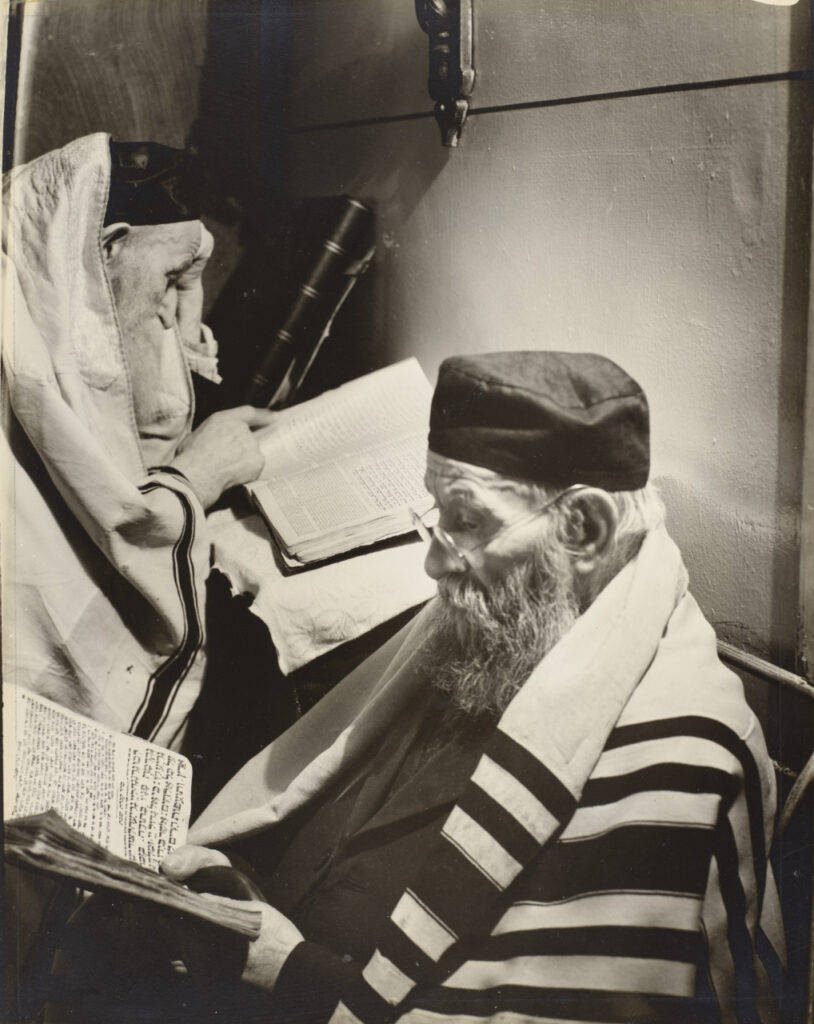Untitled, five prints from the series “Sabbath Studies” (work of art)
Artwork Info
Key Ideas
- These five prints are part of a photography project titled “Sabbath Studies.” The project documented daily life in Orthodox Jewish communities on the Lower East Side of New York City in the late 1930s.
- The Jewish elders depicted in these prints are engaged in communal prayer and study from traditional Jewish texts. They are wearing traditional prayer shawls and head coverings.
- These prints include sections of the original mat board with the date and the artist’s signature written on the back.
- Arnold Eagle was a Jewish American photographer. He was born in Budapest, Hungary, and immigrated to the United States in 1929.
- Eagle is best known for photographing New York City’s social conditions in the 1930s and 1940s.
Learn More
These five prints offer a glimpse into the religious lives of the Orthodox Jewish communities in New York City in the 1930s. The images show community elders engaged in prayer and studying the Torah (the first five books of the Hebrew Bible) and the Talmud. The men are shown wearing traditional tallitot (prayer shawls) and kippot (head coverings). There is a slight silver shine on the surface of the photographs. The photos include remnants of the original mat board, with the artist’s signature and the date written on the back. These clues indicate that the artist printed these images himself.
Arnold Eagle was born in Budapest in 1909. He immigrated to the United States with his parents in 1929. Eagle learned photography and became a member of several photography organizations in New York, including the Photo League. This group of photographers practiced social activism (working with others to create change in society). As a social activist, Eagle used his photography skills to document the social conditions in New York City. He also worked as a freelance photographer for different newspapers in the city. He later became a professor of photography at The New School.
Eagle was known as a social realist. This term refers to artists who draw attention to the sociopolitical conditions of the working class. Eagle did this by photographing the everyday lives of New Yorkers. He focused on capturing the humanity and community of the people he photographed. He was especially interested in documenting the Orthodox Jewish communities on the Lower East Side of the city. These communities consisted of first- and second-generation Americans (Eastern European immigrants and their children) who spoke Yiddish. In his project titled “Sabbath Studies,” Eagle photographed busy storefronts, bustling streets, quiet homes, and moments of prayer in these communities. He completed this project between 1937 and 1939.
Additional Resources
Resources for Teachers
- Read an article about Arnold Eagle.
- View a student activity about social realism in the United States during the Great Depression.
- Download a lesson plan that focuses on the refugee crisis and 1930s America.
Resources for Students
- Explore street-view photographs of New York City in the 1940s.
- View a timeline of the arrival of immigrants in the United States in the 1900s.





